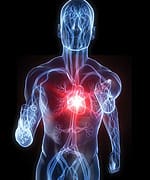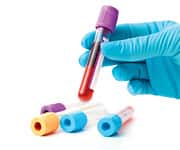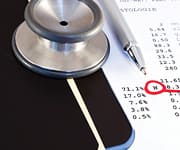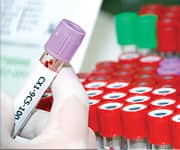Life Extension Magazine®
At the annual conference of the American Heart Association held near the end of 2011, a study was presented that measured 25-hydroxyvitamin D blood levels in a large group of Americans.1 The data corroborates previously published findings showing that people with higher vitamin D blood levels have lower risks of degenerative disease. For example, compared to people in the deficient range, those with higher blood levels of 25-hydroxy-vitamin D had significantly lower risk of heart failure, depression, coronary artery disease, and kidney failure.1 Those whose 25-hydroxyvitamin D levels ranged 81–100 ng/mL had a 36% reduction in hypertension incidence when measured against the deficient group. There was a warning issued, however, when blood 25-hydroxy-vitamin D exceeded 100 ng/mL. These individuals showed a higher risk of atrial fibrillation. Even though the data presented at the American Heart Association conference is not yet published, we immediately sent an advisory to our members to ensure they maintain sufficient 25-hydroxyvitamin D levels to protect their health, but not exceed upper limit levels long ago established by Life Extension® and other experts. How This Study Compares to Life Extension’s Protocol
In the January 2010 issue of Life Extension Magazine®, we reported startling findings that 85% of our members had less than optimal levels of vitamin D in their blood (as measured by 25-hydroxyvitamin D). Based on a large volume of published data, we recommended that the optimal range of 25-hydroxy-vitamin D to protect against disease is between 50–80 ng/mL. Yet the vast majority (85%) of our dedicated members were below 50 ng/mL. As people age their skin converts less sunlight into vitamin D. For instance, a 70-year-old will make about 25% of the vitamin D that a 20-year-old will make given equal exposure to sunlight.2,3 There are also absorption problems aging people encounter that usually requires they supplement with 5,000–7,000 IU of vitamin D a day to get their 25-hydroxyvitamin D level over 50 ng/mL.4 In the study presented at the American Heart Association conference, 25-hydroxyvitamin D blood levels were measured in 132,000 patients. Out of this large group, a small number (291 or 0.22%) had 25-hydroxyvitamin D levels over 100 ng/mL. This level exceeds what Life Extension® (and most others) has long recommended. Those whose 25-hydroxyvitamin D level exceeded 100 ng/mL had an atrial fibrillation incidence 2.5 times greater than people in the safe ranges (below 100 ng/mL). Atrial Fibrillation and Excess Vitamin D StatusAs the population ages, an increasing percentage develops an irregular rhythm in the upper chambers of the heart called atrial fibrillation. It is the most common type of heart arrhythmia and approximately 5% of persons over 65 years of age are expected to be diagnosed with it.5 The 132,000 subjects in this vitamin D study were defined by the following categories:
In patients with low, low-normal, normal, and high-normal levels of vitamin D, there was no increased risk of atrial fibrillation. Those with excess levels (above 100 ng/mL) of vitamin D had 2.5 times greater risk of atrial fibrillation compared to those with lower levels. The authors of this study recommended that people have their blood tested to ensure they are taking the proper dose of vitamin D. We at Life Extension long ago noted wide dose-response variability with vitamin D and recommended 25-hydroxyvitamin D blood tests to ensure our members are in the optimal range of between 50–80 ng/mL. Most members are surprised that even taking 5,000 IU a day (or more) of supplemental vitamin D does not always get them above 50 ng/mL. In rare instances, however, doses of less than 5,000 IU result in blood levels greater than 100 ng/mL. These real world findings confirm the importance of checking one’s vitamin D blood status after initiating a daily dose significantly higher than 2,000 IU to establish how much vitamin D is individually needed to achieve optimal ranges (50–80 ng/mL) and not excess levels (over 100 ng/mL). Atrial Fibrillation May Not Have Been Caused By Vitamin DIt is interesting to note that in patients with excess amounts (greater than 100 ng/mL) of 25-hydroxyvitamin D, a significant increase in hypothyroidism (sluggish thyroid function) was noted by the researchers who presented at the American Heart Association conference. While hyperthyroidism (overactive thyroid function) is a well-known contributing factor in atrial fibrillation, in fact hypothyroidism is an underappreciated cause of heart disease, high cholesterol, and atrial fibrillation. The high prevalence of hypothyroidism in those with excess 25-hydroxyvitamin D represents an underappreciated risk factor for atrial fibrillation in this observational trial. In other words, it may have been hypothyroidism that caused the increased incidence of atrial fibrillation and not the vitamin D.8-10 We nonetheless continue to recommend that members keep 25-hydroxyvitamin D levels below 100 ng/mL.
Excess Vitamin D Intake Relatively RareLife Extension meticulously tracks its members’ blood test results to look for trends that may indicate beneficial or detrimental events occurring in their bodies. Before members started supplementing with higher doses of vitamin D, the majority (85%) had less than optimal levels, placing them at higher risk for contracting degenerative disease. Since members have been taking higher vitamin D doses, this insufficiency has been largely corrected with relatively few results above 100 ng/mL, which can be easily reversed by reducing the daily dose of vitamin D. The more common challenge is someone taking 5,000 IU (and higher) of vitamin D3 a day and still not being able to reach 50 ng/mL. Since even conventional medicine’s upper limit reference range for 25-hydroxyvitamin D is 100 ng/mL, anyone who had their blood tested should have been able to adjust their vitamin D downward if their reading was above this level.
Do You Know What Your 25-hydroxyvitamin D Level Is?If you’ve had your blood tested through Life Extension’s convenient blood testing service and misplaced your results, just call us at 1-800-208-3444 and we will mail, email, or fax you a copy of your results. If you are taking more than 2,000 IU of supplemental vitamin D and have never had your blood tested for 25-hydroxyvitamin D, we highly recommend it. The 25-hydroxyvitamin D test is so important we now include it in our popular Male and Female Panels. Based on the findings reported at the American Heart Association conference, we have further confirmation that the optimal ranges of 25-hydroxyvitamin D (50–80 ng/mL) are safe and significantly effective in protecting against common age-related problems. There is now a basis (not yet published) to ensure that one does not exceed 100 ng/mL, which can be readily accomplished via low-cost blood testing. Unique Blood Testing ServicesNo organization is more concerned about the health and longevity of its members than Life Extension. We have not heard of any other program that mines historical blood test data to notify individuals of new findings that can affect their health. A benefit that many members may not realize is that our computer database readily enables us to go back and identify members whose results are in potentially unsafe ranges. So when a new finding appears that we can corroborate, such as where safe 25-hydroxyvitamin D levels should be; we can notify those who are above the range or below these ranges so they can take corrective actions. Life Extension retains copies of its clients’ previous blood tests dating back to March of 2008 so we can quickly send these reports via email or in paper form at no charge to you or your doctor. I think many of you have endured the bureaucracy that occurs whenever you have to interact with the medical establishment, as they erect barriers to the simplest patient request. It is sometimes important to review previous blood test results in order for your doctor to identify trends that may indicate either a benign situation or one that requires medical attention. I recall sitting at lunch with a member who called his doctor and asked to obtain a copy of previous blood tests results. This member was told the cost would be $250 and results would not be produced right away. I told this member he could call Life Extension anytime and obtain previous blood test results at no charge with a turnaround time of less than three days. Sharply Discounted Blood Tests
In 1996, we initiated a low-cost service whereby members could request their own blood tests. A lot of people express surprise when their blood test results uncovers elevated glucose, triglycerides or the many other factors that predispose them to heart attack and stroke. These individuals often tell us “these blood markers never used to be this high.” We try to respond diplomatically, but our stark message is that “your blood has never been tested when you were this old.” The irrefutable fact is that younger individuals often have low levels of vascular disease markers (such as LDL, triglycerides, glucose, etc.), but these insidious killers creep up as one ages. When blood test results reveal disease markers to be out of balance, corrective actions can be taken before irreversible disease manifests. Culprits that preclude Americans from having their blood properly tested are inconvenience, long waits at doctor’s offices, physician ignorance about what tests to prescribe, and high costs. Life Extension long ago solved these impediments by enabling members to order comprehensive blood tests directly, go to a drawing station in their area usually with no appointment required, and obtain the critical blood tests they need at a fraction of the price charged by commercial laboratories. Once a year, the price of the comprehensive Male or Female Blood Test Panel is sharply discounted so that members can ascertain their disease risk status and initiate preemptive measures before acute illness strikes. This year we are including the 25-hydroxyvitamin D blood test in these comprehensive panels at no additional charge. I encourage you to obtain your Male or Female Blood Test Panel soon. We send your requisition out immediately, but you can walk in for your blood draw at a time during normal business hours that is convenient to you. The next page describes the many unique tests that are included in Life Extension’s comprehensive panels. To order the Male or Female Blood Test Panel at these once-a-year discounted prices, call 1-800-208-3444 (24 hours/day). For longer life,
William Faloon | ||||||||||||||||||||||||
| References | ||||||||||||||||||||||||
| 1. Available at: http://circ.ahajournals.org/cgi/content/meeting_abstract/ 124/21_MeetingAbstracts/A14699?sid=d8af4ab7-eb16-4360-8e52- 179868c1e439. Accessed November 21, 2011. 2. MacLaughlin J, Holick MF. Aging decreases the capacity of human skin to produce vitamin D3. J Clin Invest. 1985 Oct;76(4):1536-8. 3. Holick MF. Sunlight and vitamin D for bone health and prevention of autoimmune diseases, cancers, and cardiovascular disease Am J Clin Nutr 2004;80:1678S-88S. 4. Available at: http://www.merckmanuals.com/home/digestive_disorders/biology_of_the_digestive_system/ 5. Available at: http://www.medscape.com/viewarticle/465717. Accessed November 21, 2011. 6. Available at: http://www.webmd.com/heart-disease/atrial-fibrillation/ heart-disease-atrial-fibrillation-basics. Accessed November 21, 2011. 7. Available at: http://www.mayoclinic.org/medical-edge-newspaper-2009/ july-03a.html. Accessed November 21, 2011. 8. Tajiri J, Hamasaki S, Shimada T, Morita M, Higashi K, Ohishi S, et al. Masked thyroid dysfunction among elderly patients with atrial fibrillation. Jpn Heart J. 1986 Mar;27(2):183-90. 9. Barnes DJ, O’Connor JD, Bending JJ. Hypothyroidism in the elderly: clinical assessment versus routine screening. Br J Clin Pract. 1993 May-Jun;47(3):123-7. 10. Park YJ, Yoon JW, Kim KI, Lee YJ, Kim KW, Choi SH, et al. Subclinical hypothyroidism might increase the risk of transient atrial fibrillation after coronary artery bypass grafting. Ann Thorac Surg. 2009 Jun;87(6):1846-52. 11. Edlich R, Mason SS, Chase ME, Fisher AL, Gubler K, Long WB 3rd, et al. Scientific documentation of the relationship of vitamin D deficiency and the development of cancer. J Environ Pathol Toxicol Oncol. 2009 28(2):133-41. 12. Holick MF. Vitamin D: important for prevention of osteoporosis, cardiovascular heart disease, type 1 diabetes, autoimmune diseases, and some cancers. South Med J. 2005 Oct;98(10):1024-7. 13. Garland CF, Gorham ED, Mohr SB, Garland FC. Vitamin D for cancer prevention: global perspective. Ann Epidemiol. 2009 Jul;19(7):468-83. 14. Penna-Martinez M, Ramos-Lopez E, Stern J, Hinsch N, Hansmann ML, Selkinski I, et al. Vitamin D receptor polymorphisms in differentiated thyroid carcinoma. Thyroid. 2009 Jun;19(6): 623-8. 15. Chiang KC, Chen TC. Vitamin D for the prevention and treatment of pancreatic cancer. World J Gastroenterol. 2009 Jul 21;15(27):3349-54. 16. Lipworth L, Rossi M, McLaughlin JK, et al. Dietary vitamin D and cancers of the oral cavity and esophagus. Ann Oncol. 2009 Sep;20(9):1576-81. 17. Crew KD, Gammon MD, Steck SE, et al. Association between plasma 25-hydroxyvitamin D and breast cancer risk. Cancer Prev Res (Phila). 2009 Jun;2(6):598-604. 18. Wesseling-Perry K, Salusky IB. Is replacement therapy with nutritional and active forms of vitamin D required in chronic kidney disease mineral and bone disorder? Curr Opin Nephrol Hypertens. 2009 Jul;18(4):308-14. 19. Giovannucci E, Liu Y, Rimm EB, et al. Prospective study of predictors of vitamin D status and cancer incidence and mortality in men. J Natl Cancer Inst. 2006 Apr 5;98(7):451-9. 20. Wu K, Feskanich D, Fuchs CS, Willett WC, Hollis BW, Giovannucci EL. A nested case control study of plasma 25-hydroxyvitamin D concentrations and risk of colorectal cancer. J Natl Cancer Inst. 2007 Jul 18;99(14):1120-9. 21. Gouni-Berthold I, Krone W, Berthold HK. Vitamin D and cardiovascular disease. Curr Vasc Pharmacol. 2009 Jul;7(3):414-22. 22. Szabó B, Merkely B, Takács I. The role of vitamin D in the development of cardiac failure. Orv Hetil. 2009 Jul 26;150(30):1397-402. 23. Giovannucci E, Liu Y, Hollis BW, Rimm EB. 25-hydroxyvitamin D and risk of myocardial infarction in men: a prospective study. Arch Intern Med. 2008 Jun 9;168(11):1174-80. 24. Dobnig H, Pilz S, Scharnagl H, Renner W, Seelhorst U, Wellnitz B, et al. Independent association of low serum 25-hydroxyvitamin d and 1,25-dihydroxyvitamin d levels with all-cause and cardiovascular mortality. Arch Intern Med. 2008 Jun 23 168(12):1340-9. 25. Martins D, Wolf M, Pan D, et al. Prevalence of cardiovascular risk factors and the serum levels of 25-hydroxyvitamin D in the United States: data from the Third National Health and Nutrition Examination Survey. Arch Intern Med. 2007 Jun 11;167(11):1159-65. 26. Suzuki Y, Ichiyama T, Ohsaki A, Hasegawa S, Shiraishi M, Furukawa S. Anti-inflammatory effect of 1alpha,25-dihydroxyvitamin D(3) in human coronary arterial endothelial cells: Implication for the treatment of Kawasaki disease. J Steroid Biochem Mol Biol. 2009 Jan;113(1-2):134-8. 27. Cutolo M, Otsa K, Laas K, et al. Circannual vitamin d serum levels and disease activity in rheumatoid arthritis: Northern versus Southern Europe. Clin Exp Rheumatol. 2006 Nov-Dec;24(6):702-4. 28. Dietrich T, Nunn M, Dawson-Hughes B, Bischoff-Ferrari HA. Association between serum concentrations of 25-hydroxyvitamin D and gingival inflammation. Am J Clin Nutr. 2005 Sep 82(3):575-80. 29. Xia JB, Wang CZ, Ma JX, An XJ. Immunoregulatory role of 1,25-dihydroxyvitamin D(3)-treated dendritic cells in allergic airway inflammation. Zhonghua Yi Xue Za Zhi. 2009 Mar 3 89(8):514-8. 30. Mathieu C, Adorini L. The coming of age of 1,25-dihydroxyvitamin D(3) analogs as immunomodulatory agents. Trends Mol Med. 2002 Apr;8(4):174-9. 31. Ginde AA, Mansbach JM, Camargo CA Jr. Association between serum 25-hydroxyvitamin D level and upper respiratory tract infection in the Third National Health and Nutrition Examination Survey. Arch Intern Med. 2009 Feb 23;169(4):384-90. 32. Karatekin G, Kaya A, Salihoğlu O, Balci H, Nuhoğlu A. Association of subclinical vitamin D deficiency in newborns with acute lower respiratory infection and their mothers. Eur J Clin Nutr. 2009 Apr;63(4):473-7. 33. Cannell JJ, Vieth R, Umhau JC, et al. Epidemic influenza and vitamin D. Epidemiol Infect. 2006 Dec;134(6):1129-40. 34. Alvarez-Díaz S, Valle N, García JM, et al. Cystatin D is a candidate tumor suppressor gene induced by vitamin D in human colon cancer cells. J Clin Invest. 2009 Aug;119(8):2343-58. 35. Lowe L, Hansen CM, Senaratne S, Colston KW. Mechanisms implicated in the growth regulatory effects of vitamin D compounds in breast cancer cells. Recent Results Cancer Res. 2003 164:99-110. 36. Moreno J, Krishnan AV, Peehl DM, Feldman D. Mechanisms of vitamin D-mediated growth inhibition in prostate cancer cells: inhibition of the prostaglandin pathway. Anticancer Res. 2006 Jul-Aug;26(4A):2525-30. 37. Lehmann B. The vitamin D3 pathway in human skin and its role for regulation of biological processes. Photochem Photobiol. 2005 Nov-Dec;81(6):1246-51. 38. Qiao G, Kong J, Uskokovic M, Li YC. Analogs of 1alpha,25-dihydroxyvitamin D(3) as novel inhibitors of renin biosynthesis. J Steroid Biochem Mol Biol. 2005 Jun;96(1):59-66. |








